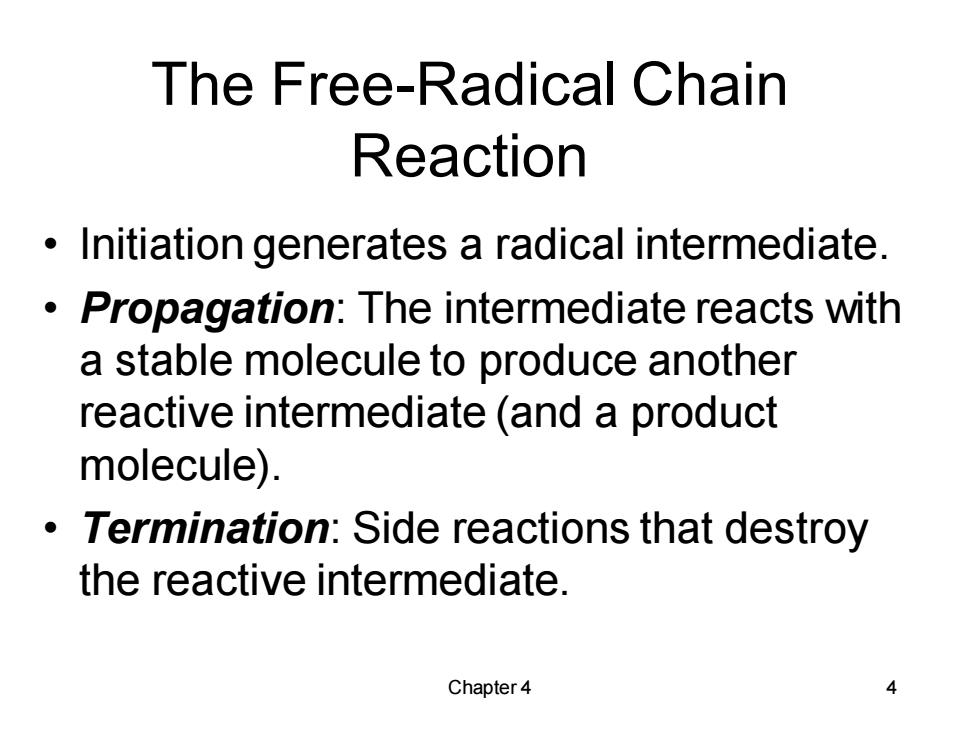
Organic Chemistry,7th Edition H. L.G.Wade,Jr. H Chapter 4 The Study of Chemical Reactions Copyright 2010 Pearson Education,Inc
Chapter 4 Copyright © 2010 Pearson Education, Inc. Organic Chemistry, 7th Edition L. G. Wade, Jr. The Study of Chemical Reactions

Introduction ·Overall reaction:reactants→products Mechanism:Step-by-step pathway. To learn more about a reaction: ·Thermodynamics Kinetics Chapter 4 2
Chapter 4 2 Introduction • Overall reaction: reactants → products • Mechanism: Step-by-step pathway. • To learn more about a reaction: ▪ Thermodynamics ▪ Kinetics

Chlorination of Methane H H H一CH CI-CI heat or light H-H-CI H-CI H H methane chlorine chloromethane hydrogen (methyl chloride) chloride Copyright2010 Pearson Prentice Hall,Inc. Requires heat or light for initiation. The most effective wavelength is blue,which is absorbed by chlorine gas. Many molecules of product are formed from absorption of only one photon of light (chain reaction). Chapter 4 3
Chapter 4 3 Chlorination of Methane • Requires heat or light for initiation. • The most effective wavelength is blue, which is absorbed by chlorine gas. • Many molecules of product are formed from absorption of only one photon of light (chain reaction)

The Free-Radical Chain Reaction Initiation generates a radical intermediate. Propagation:The intermediate reacts with a stable molecule to produce another reactive intermediate(and a product molecule). Termination:Side reactions that destroy the reactive intermediate. Chapter 4 4
Chapter 4 4 The Free-Radical Chain Reaction • Initiation generates a radical intermediate. • Propagation: The intermediate reacts with a stable molecule to produce another reactive intermediate (and a product molecule). • Termination: Side reactions that destroy the reactive intermediate

Initiation Step:Formation of Chlorine Atom photon (hv) :g+ Copyright2010 Pearson Prentice Hall,Inc. A chlorine molecule splits homolytically into chlorine atoms (free radicals). Chapter4 5
Chapter 4 5 Initiation Step: Formation of Chlorine Atom A chlorine molecule splits homolytically into chlorine atoms (free radicals)